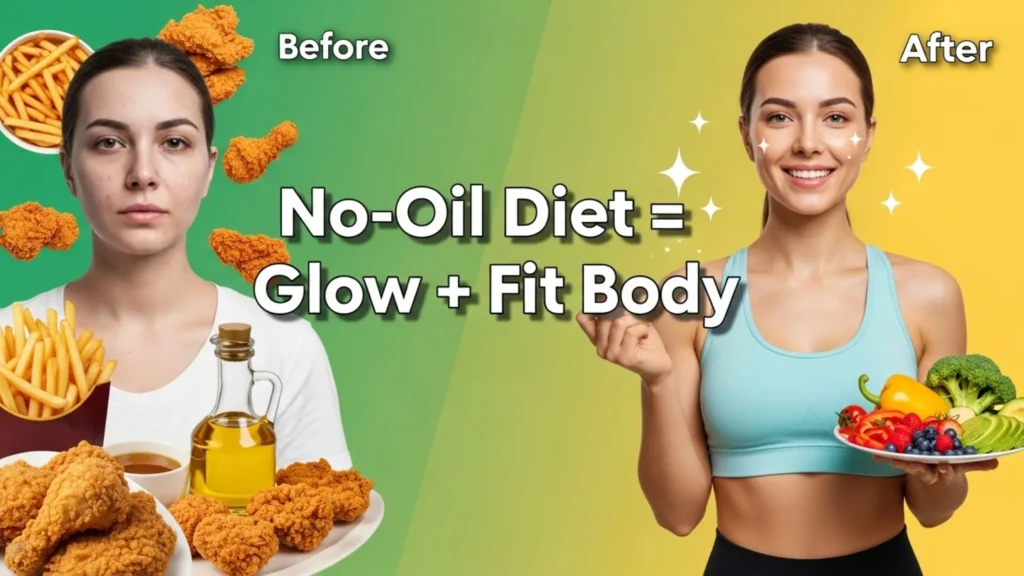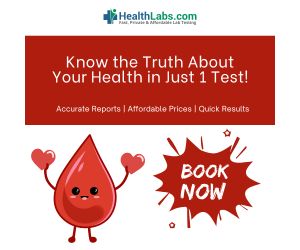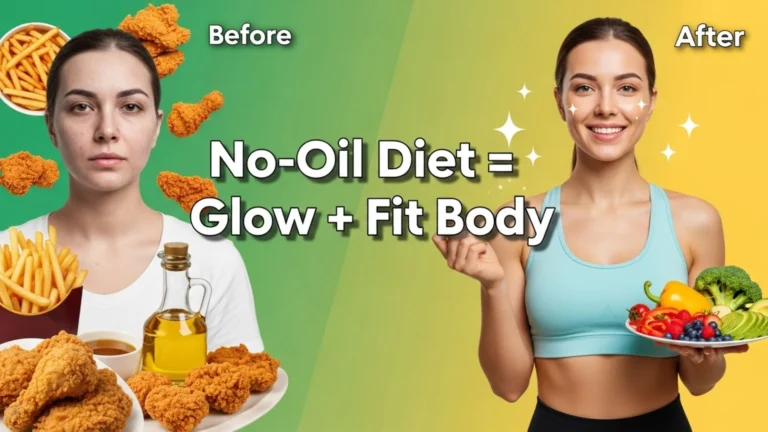Imagine waking up one morning, looking in the mirror, and noticing that your skin is naturally glowing — not because of makeup or an expensive facial, but because your body feels lighter, your digestion is better, and your energy levels are up.
That’s exactly what happened to Sarah, a 34-year-old from California, who decided to try a no-oil diet for 30 days. By the end of the month, not only had she lost 8 pounds, but her skin looked clearer than it had in years.
The truth is, while oil has been a staple in most kitchens, cutting it out (or drastically reducing it) can bring surprising health benefits. In this blog, we’ll break down what a no-oil diet is, how it works, and the amazing transformations you can expect for both your body and skin.
What is a No-Oil Diet?
A no-oil diet simply means preparing and consuming meals without adding any extracted oils — such as olive oil, coconut oil, canola oil, or vegetable oil.
Instead, foods are cooked using water, broth, steaming, baking, or air-frying. The focus is on whole, unprocessed foods like vegetables, fruits, whole grains, legumes, and nuts in their natural form.
It’s not about avoiding healthy fats completely — your body still gets them from natural sources like avocados, seeds, and nuts — but rather avoiding concentrated oils that are calorie-dense and nutrient-light.
Why People in the USA Are Switching to No-Oil Diets
In the past decade, more Americans have started questioning traditional dietary habits. With rising cases of obesity, heart disease, and skin conditions, many are seeking simpler, plant-forward, and less processed eating styles.
The no-oil approach fits perfectly into trends like whole-food plant-based (WFPB) eating, which is backed by doctors such as Dr. Caldwell Esselstyn and Dr. Dean Ornish for improving cardiovascular health.
How a No-Oil Diet Transforms Your Body
Let’s break down the major benefits your body can experience when you skip the oil.
1. Weight Loss Without Counting Calories
Oil is the most calorie-dense food on the planet — about 120 calories per tablespoon — and it doesn’t make you feel full. When you eliminate oil, your meals naturally become lower in calories but still filling, because they’re packed with fiber from whole foods.
For people like Sarah, this was the game-changer: she could eat hearty meals without calorie guilt.
2. Better Heart Health
Excess oil, even so-called “healthy oils,” can still contribute to clogged arteries over time if consumed in large amounts. Studies have shown that reducing added oils helps lower cholesterol levels and improve blood circulation, reducing the risk of heart attacks.
3. Improved Digestion
Greasy meals can slow digestion and cause bloating or discomfort. Without the extra oil, your gut works more efficiently, and fiber-rich meals support a healthier microbiome.
4. Stable Energy Levels
Oil-heavy foods can cause post-meal sluggishness because of their high fat load. A no-oil diet provides steady energy without the afternoon crash, making it easier to stay active and alert throughout the day.
The Skin Benefits You Can Expect
The no-oil diet isn’t just about feeling better — it’s also about looking better. Here’s why your skin may start to glow:
1. Reduced Acne Breakouts
Oily, fried, and processed foods can trigger inflammation, leading to acne and other skin issues. Without these, inflammation levels drop, and your skin has a better chance to heal.
2. Brighter, Even-Toned Complexion
Whole plant foods are rich in vitamins like Vitamin C and antioxidants, which help fight free radicals, reduce dark spots, and boost collagen production for smoother skin.
3. Better Hydration
Oils don’t hydrate your skin — water and natural moisture from fruits and vegetables do. A diet rich in water-containing foods like cucumbers, berries, and leafy greens keeps skin plump.
4. Slower Signs of Aging
Antioxidants in whole plant foods help reduce fine lines and wrinkles by protecting skin cells from damage.
How to Start a No-Oil Diet (Without Feeling Deprived)
Many people worry that food without oil will taste bland, but here’s the secret — it doesn’t have to.
1. Use Flavorful Cooking Methods
- Steam or boil veggies with herbs for aroma.
- Air-fry for crispiness without grease.
- Bake or roast with vegetable broth for depth.
2. Spice It Up
Herbs and spices like garlic, smoked paprika, rosemary, turmeric, and cumin make meals exciting and flavorful.
3. Get Your Healthy Fats Naturally
Include avocados, chia seeds, walnuts, and flaxseeds for skin-friendly fats without processed oils.
4. Try Oil-Free Dressings
Blend tahini, lemon juice, herbs, and water for creamy salad dressings without oil.
A One-Week No-Oil Meal Plan Example
Breakfast: Overnight oats with almond milk, berries, and flaxseeds.
Lunch: Lentil soup with whole-grain bread.
Dinner: Quinoa stir-fry with steamed veggies and tofu.
Snacks: Apple slices with almond butter, roasted chickpeas.
Potential Challenges & How to Overcome Them
- Cravings for Fried Food: Try baked or air-fried alternatives.
- Eating Out: Ask restaurants to prepare dishes without oil or opt for steamed/baked options.
- Social Gatherings: Bring your own dish so you know what’s in it.
Final Thoughts: A Transformation Beyond the Plate
A no-oil diet isn’t a quick fix — it’s a lifestyle shift that can bring powerful changes to your health, body, and skin. From shedding extra pounds to waking up with a natural glow, the benefits are worth the initial adjustment.
Like Sarah from our opening story, you might find yourself feeling lighter, looking fresher, and enjoying meals that are wholesome yet satisfying. Whether you try it for a week, a month, or make it a permanent change, your body and skin will thank you.
For more health-related awareness, you can read our detailed article on Understanding HIV and AIDS: A Guide to Staying Safe and Informed.
Disclaimer:
This article is for informational purposes only and is not intended to replace professional medical advice, diagnosis, or treatment. Always consult with a qualified healthcare provider before making significant changes to your diet, especially if you have underlying health conditions, allergies, or specific nutritional needs. Individual results may vary.














